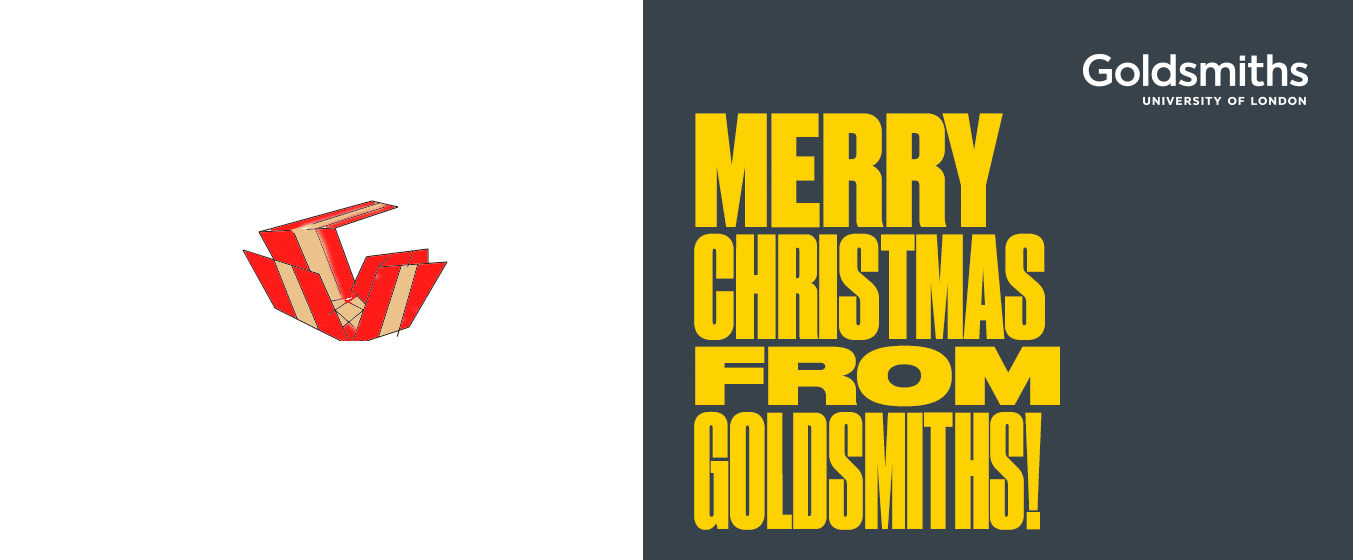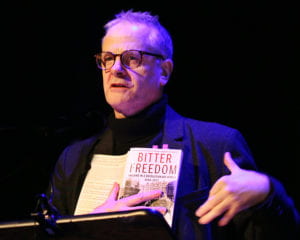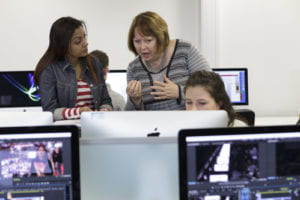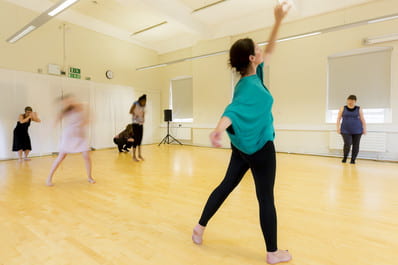
This year’s e-Christmas card was designed by Koby, one of the students at our National Art&Design Saturday Club

This year’s e-Christmas card was designed by Koby, one of the students at our National Art&Design Saturday Club

Hi there! Could you tell us a little bit about yourself and your background?
I teach History and wrote Bitter Freedom: Ireland in a Revolutionary World 1918-1923. In a previous life I was a foreign correspondent and documentary maker, reporting for the BBC from Africa, Asia, Latin America and the US. I’ve written for publications such as The Guardian magazine, The Irish Times and Granta.
Please can you give us a quick overview of the degree course?
This is a degree in which students learn how to use a keen understanding of the past to produce riveting journalism about the present. It is based on the idea that the best journalism is informed by a sound understanding of the history. For all the stories I have covered as a foreign correspondent – from revolutions in Latin America to the effect of oil exploration in Africa – knowledge of history was vital to be able to grasp the context for fast-moving events. Especially in these turbulent times many of the big issues from Brexit to the rise of populism cannot be understood without some grasp of history.
Anyone thinking of going into journalism or the media who does this course will have distinct edge over journalists who don’t look beyond the present. Students study history modules and journalism modules – such as feature writing and video reporting – side by side. They then bring together what they have learned by working on long-form pieces of journalism using the skills they’ve acquired as historians to give their work more depth and edge: using archives and documentary sources, researching how history has shaped current events.
What makes the Goldsmiths course distinctive?
We think our degree is unique. Unlike courses at other universities where you can take history and journalism in parallel, the BA History and Journalism at Goldsmiths is designed so that the two strands mesh seamlessly together. It is taught by historians who are also journalists and journalists who have written about history and covered major historical events. There are two bespoke modules where students learn how to apply their history skills to journalism. One of these is the big project they undertake in their final year, producing an extended piece of journalism on an historical theme which should be of a standard for publication on a journalistic platform.
What are you looking for in an applicant? Do you have any tips for a great personal statement?
We’re looking for students who love history at school and also have a passionate curiosity about current events, constantly noticing how history shapes the present and interested in writing about it. Ideally, they will be aiming to work in journalism or the media but they could also be interested in communication more generally, say for an NGO or in a job requiring research skills.
The best personal statements come alive when someone shares their enthusiasm for reading history books that have not just been assigned for the A level course.
How does this degree support students practically for life after university?

Students on this course will leave with a comprehensive set of skills: knowledge of multimedia journalism techniques and practices, the ability to gather information, analyse it and then present it to a wide variety of audience in a range of genres and forms. And again, given the times we live in, whatever career you eventually pursue, the ability to be able to assess contemporary events in the light of knowledge about history will be a huge practical help in negotiating the fog of claim and counter-claim that dominates the news and social media.
And finally…tell us a joke!
I’m afraid I have a weakness for corny jokes. Theft in multi-story car parks? Wrong on so many levels…
Find out more about the BA History & Journalism at gold.ac.uk/ug/ba-history-journalism
What is my learning style?
Knowing your learning style may help you to find the ways of studying and revising that work best for you. Most people are a combination of different styles, so different methods may help you in different circumstances.
When you have to remember a phone number and type it into your phone, do you:
a. Imagine how the number is written on the screen?
b. Hear the number out loud in your head?
c. Feel how you would type the number into a phone? (i.e. remember the movement of typing it in)
If you think a then you are a visual learner, b indicates an auditory learner, and c gives a kinaesthetic learner. Remember – you could be a mix of 2 or even all 3!
Visual learners
General characteristics and habits of visual learners include:
– Tend to be fast talkers and may interrupt others
– Learn by seeing charts and diagrams
– Need quiet study time
– Take detailed notes which may include pictures
– Learn best when sitting at the front of class
Tips for visual learners when studying and revising:
Use maps, charts, graphs, diagrams, videos, and anything visual to create revision aids that will really help. Flashcards are a great option for definitions of words in languages, or learning equations in science and maths. With important information that is essential to remember, make this stand out by colour coding, highlighting, circling, underlining, or anything that works for you. In class, copy down what is on the board, take notes, and make lists to help your revision process.

Auditory learners
General characteristics and habits of auditory learners include:
– Tend to be natural listeners, speak slowly and explain things well
– Prefer to hear information rather than read it
– Read slowly
– Like to repeat things aloud
Tips for auditory learners when studying and revising:
Record lectures and lessons, or even yourself reading notes, on a voice memo or recorder and listen back to them later. This will help to reinforce the information that’s being put across. Read material aloud when you’re revising or going through the topic after learning for the first time. Explain concepts aloud in your own words, either to yourself or within a group discussion. If you are able to tell someone else about a topic, chances are you already know it well yourself. Use word associations or mnemonic devices to help you to remember.
Kinaesthetic learners
General characteristics and habits of kinaesthetic learners include:
– Tend to be the slowest talkers and have a short attention span
– Learn by doing and solving real life problems
– Like hands-on approaches
– Can’t sit still for long, get fidgety
– Need to take breaks when studying
Tips for kinaesthetic learners when studying and revising:
Make and use flashcards or memory games to give a dynamic aspect to your revision. These could be to remember definitions, equations, historical eras, anything you like. Study with others and exchange ideas. Study in short blocks with regular short breaks or rewards between topics. In school, subjects that involve lab classes, practical activities and field trips will help you with learning. Doodle while studying or reading, or keep active by bouncing a ball or walking around while you read notes.
Feel free to try out any of these techniques, and remember to try different things to find out what works best for you!
With Year 11 students around the country beginning to look at their options after they finish GCSEs, we look at some of the advice and guidance that is available to young people and offer some thoughts from a university perspective.
Sometimes it can feel a little bit daunting when you have to make big decisions about your future when you don’t really know exactly what you want to do. It’s important to think carefully about the different options but also, not to panic! We see students come through the doors at Goldsmiths who have taken many different routes to get here. There are many more people out there who have become successful in all walks of life without following a ‘traditional’ path.
There’s lots of information available online offering advice on what you can do after 16 but we’d always advise talking to a trained careers advisor at your school who can talk you through the different options. Other places to look for top-notch advice include the UCAS further education website, where you can look into the many different post-16 routes and qualifications. You may also want to have a look at the National Careers Service website, where you can get advice on all aspects of employment, from CVs to course searches, and take part in web chats with trained advisors.
If you are considering university in the future, we would recommend looking into A levels and BTECS, which are the most traditional route to university. People are increasingly taking combinations of qualifications and that’s absolutely fine with most universities (although you may want to have a quick check as some universities will still prioritise A levels). For many courses, it doesn’t usually matter what subjects you choose to study at post-16, but, you may want to check beforehand by looking at university websites. Courses that often look for a particular subject are Medicine, English Literature and Engineering, though there are plenty more.
Good luck, and remember it’s never too early to start planning for your future!